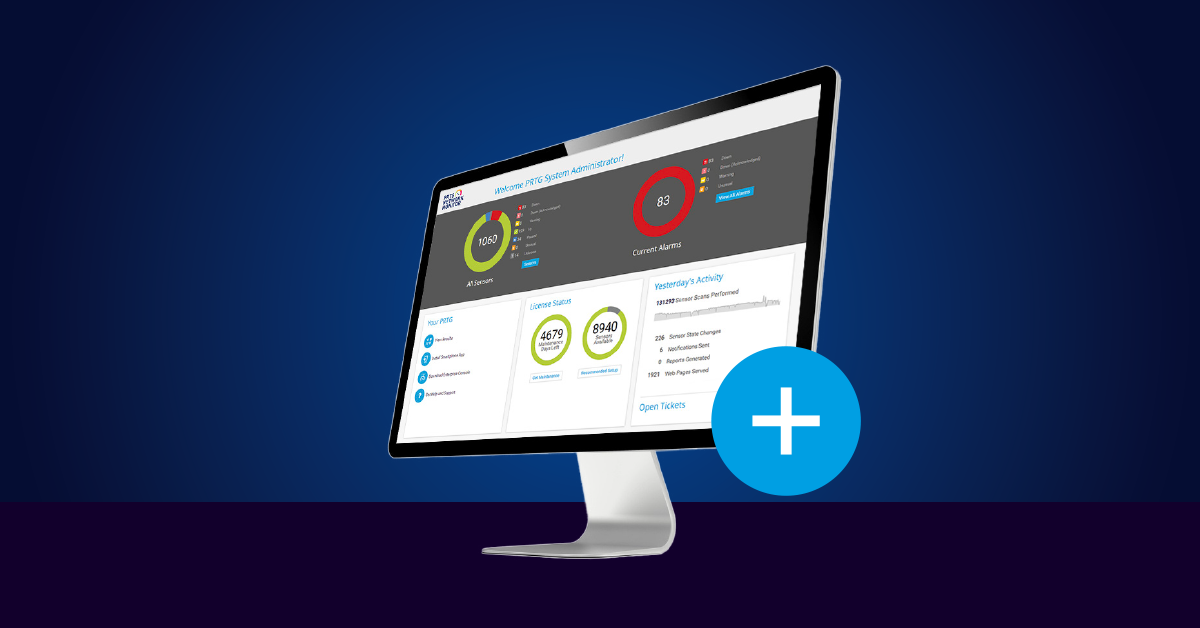If you use PRTG, you already know that it can monitor almost everything: from switches, routers, and firewalls through to printers and workstations, there are tons of options. As a very general rule of thumb, each device in your network will need an average of ten sensors to monitor it. This depends on what is being monitored and what information you need, but it's a reliable metric to roughly calculate the number of sensors to implement in PRTG. And the number of sensors has a direct impact on how you will deploy PRTG.
For smaller environments you can go for the most basic PRTG architecture: a PRTG core server with all of your sensors running on the same machine on the local probe. If you have a few thousand sensors, deploying one or more remote probes can be useful to spread the load of monitoring requests, especially when using the more performance-hungry protocols in combination with short scanning intervals.
However, what happens in a large environment, when the number of devices is in the thousands and you reach a sensor count of 10,000 or more?
Large Environments
There are two approaches that can be used to deploy PRTG in environments that require a multitude of sensors: vertical scaling and horizontal scaling. Vertical scaling is when you have a single PRTG server and add all additional sensors to this configuration, most likely using remote probes. It is easy to do and the preferred solution if you do not reach the performance limits for a single installation. We recommend looking into our implementation guidelines, at least when you are near a sensor count of 10,000 (however, implementation guidelines is a topic on its own and can be covered in another blog post).
Horizontal Scaling
Horizontal scaling, on the other hand, is where you add multiple PRTG servers to the environment. This is the approach that works best for really large scale environments, and this is what I'll be focusing on in this post.
There are several scenarios for scaling PRTG horizontally. I'll detail two of the most common here.
#1: Multiple Independent Configurations in a Siloed Environment
There are several separate environments in this setup, each with its own team of admins and its own PRTG server. The environments might re-use certain PRTG elements like device templates, but essentially each PRTG server has its own configuration.
This setup works well for independent teams, because each server has its own configuration and user base.

#2: Multiple Independent Configurations to Balance the Workload
This scenario has multiple PRTG servers, each with their own configuration, monitoring the same network (in other words, the network infrastructure itself is not in silos). Each server monitors various aspects of the same network, and this means that the processing workload is spread between the core servers.

Still, each server has its own configuration and user base, which is why you should segment your monitoring setup in a way that fits your organization. If you have a company with many branch offices, it might make sense to divide your servers by geography.

If there are different teams that are responsible for different types of equipment, then a functional breakdown by type of equipment might be useful.

It's worth putting a little brain work into these considerations, because a clever division will give you more pleasure in the later configuration. It makes sense to consider getting professional consulting from one of our experienced PRTG partners, too.
Paessler PRTG Enterprise Monitor
PRTG Enterprise Monitor is a solution from Paessler for monitoring larger IT environments. It provides you with unlimited PRTG servers, and comes with a flexible, annual subscription license. This ensures that PRTG can scale up easily if you find you need to implement more sensors – no need to switch licenses, or remember to renew your maintenance.
 Published by
Published by 













